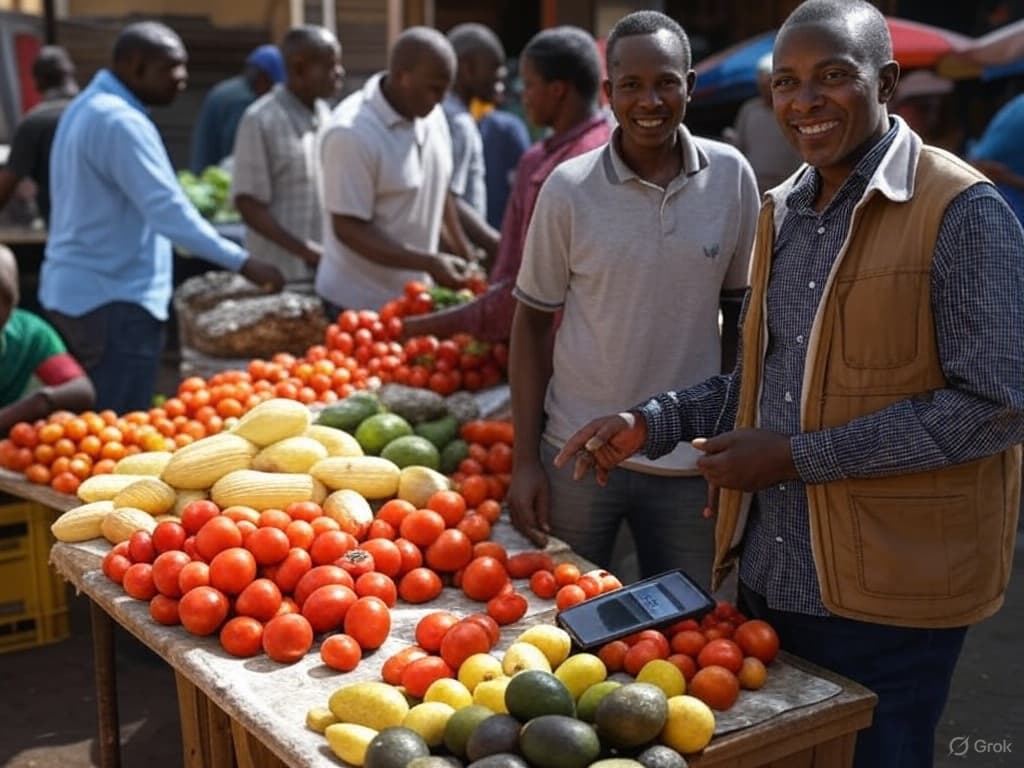Imagine this: the sun rises over your orchard, rows of vibrant fruit trees heavy with ripe, juicy produce—apples glistening with morning dew, oranges bursting with color, or berries practically begging to be picked. As a farmer, you’ve poured your heart into growing these fruits, but the real question is: how do you turn this harvest into a thriving, profitable business? Selling fruit isn’t just about picking and packing—it’s about strategy, creativity, and tapping into what today’s buyers crave. Let’s dive into some exciting, practical ways you can sell your fruits and earn serious money while keeping your customers coming back for more.
1. Know Your Market—And Wow Them
The first step to raking in profits is understanding who’s buying. Are you near a bustling city with health-conscious foodies? A small town with families who love homemade pies? Or maybe you’re in a tourist hotspot where visitors crave a taste of local flavor. Tailor your approach to your audience. For example:
Urban buyers might pay a premium for organic, pesticide-free fruits delivered straight to their door.
Local families could go wild for a “pick-your-own” weekend experience.
Tourists will snap up fruit baskets or jams as souvenirs.
Pro tip: Add a story to your fruit. People love knowing their apples came from a third-generation farm or that your berries are grown with sustainable methods. Check out platforms like Agrovia.co (your site!) to share that story—it’s a perfect way to connect with buyers who care about where their food comes from.
2. Diversify Your Sales Channels
Don’t put all your apples in one basket—literally! Selling through multiple avenues can skyrocket your income. Here’s how:
Farmers’ Markets: These are goldmines for direct sales. Set up a colorful stall, offer free samples (a taste of your sweet peaches will sell itself), and bundle fruits into eye-catching packages—like a “smoothie starter pack” with berries, bananas, and a recipe card.
Online Marketplaces: Use your platform, Agrovia.co, to list your fruits. Add high-quality photos, detailed descriptions (e.g., “Hand-picked Honeycrisp apples, crisp and sweet”), and easy ordering options. Ship locally or offer pickup to keep costs low.
Restaurants and Cafes: Chefs love fresh, local ingredients. Pitch your fruits to nearby eateries—think citrus for zesty desserts or berries for gourmet salads. A steady contract could mean consistent cash flow.
Subscription Boxes: Offer a weekly or monthly fruit box. Customers sign up, and you deliver a mix of whatever’s in season. Throw in a surprise—like a rare heirloom apple—and watch subscribers rave about it.
3. Add Value, Boost Profits
Why sell just fruit when you can sell more? Value-added products can turn a modest harvest into a money-making machine. Try these:
Jams and Preserves: Turn overripe strawberries or plums into delicious spreads. Cute jars with rustic labels sell like hotcakes at markets or online.
Dried Fruit: Invest in a dehydrator and transform apples, mangoes, or bananas into healthy snacks. Package them in eco-friendly bags for the win.
Juices or Cider: Fresh-pressed apple cider or a tangy orange juice blend can fetch a higher price than raw fruit—and it’s a great way to use blemished produce.
Fruit-Infused Goodies: Partner with a local baker to create fruit pies, tarts, or even fruit-infused honey. Split the profits and expand your reach.
The best part? These products extend your selling season beyond fresh harvests, keeping income steady year-round.
4. Leverage the Power of Community
People love supporting farmers—it makes them feel good. Tap into that goodwill:
Host Farm Events: Invite folks to your orchard for a “Fruit Fest” with picking, tastings, and live music. Charge an entry fee and sell fruit on the spot.
Crowdfunding Campaigns: Need cash to expand? Launch a campaign on Agrovia.co, offering backers exclusive fruit boxes or a “name a tree” perk. It’s a fun way to engage your community.
Social Media Buzz: Post stunning photos of your harvest—think golden pears against a sunset or kids biting into watermelon. Share quick tips (e.g., “How to pick the ripest peach”) to build a following, then direct them to your sales page.
5. Go Big with Bulk and Wholesale
If you’ve got a bumper crop, don’t let it go to waste. Sell in bulk to:
Grocery Stores: Smaller chains or co-ops often prioritize local produce. Negotiate a fair price and deliver consistently.
Food Processors: Companies making juices, sauces, or frozen goods need raw fruit. It’s less profit per pound, but it moves volume fast.
Charities with a Twist: Donate excess to food banks and ask for a tax write-off—or sell “seconds” (slightly imperfect fruit) at a discount to budget-conscious buyers.
6. Price Smart, Earn More
Pricing is an art. Too low, and you’re leaving money on the table; too high, and you scare buyers away. Research local competitors, then position yourself as the premium choice if your quality justifies it. Offer deals—like “buy 5 pounds, get 1 free”—to encourage bigger purchases without slashing your margins.
The Sweet Reward
Picture this: your bank account’s growing, your customers are raving, and your fruit’s the talk of the town. By mixing smart marketing, creative products, and a personal touch, you’re not just selling fruit—you’re building a brand. Platforms like Agrovia.co are perfect for showcasing your journey and connecting with buyers who’ll pay top dollar for your hard work.
So, grab that basket, head to the orchard, and start turning those fruits into a fortune. The harvest is yours—now go make it profitable!




